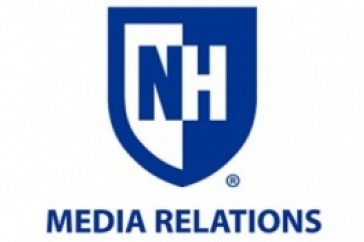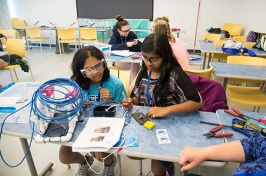UNH Awarded $6 Million NOAA/NASA Contract to Build Space Weather Instrument

DURHAM, N.H.— The National Oceanic and Atmospheric Administration and NASA have selected the University of New Hampshire Space Science Center to design and build a specialized instrument to improve space weather monitoring and forecasting capabilities. The magnetometer is part of a suite of instruments which will measure storms created by the solar wind which can affect such things as satellite communications and electric grids on Earth.
“This project will build on UNH’s legacy of magnetic sensor design and its success with electronics instrumentation from recent NASA projects like the MMS mission,” said Roy Torbert, UNH professor of physics and the lead PI on the magnetometer portion of the mission. “With this magnetometer, we’ll be able to measure how the Earth’s magnetic field is impacted by the solar wind and help support NOAA’s mission to monitor and forecast space weather events that can influence the performance of technology such as electrical power grids, satellite-based communication and GPS navigation systems.”
A team of eight UNH researchers will partner with the Southwest Research Institute (SwRI), the lead institution, to develop the magnetometer that will be a part of the Space Weather Follow-On L1 (SWFO-L1) mission which measures the intersection of the sun’s and Earth’s magnetic fields. The SWFO-L1 satellite will orbit the sun approximately 1.5 million kilometers from the Earth at a point scientists call Lagrange Point 1 (L1), which will allow for an unobstructed view of the sun’s corona, the source of the solar wind, for improved data collection.
“A spacecraft located at L1 can measure the solar wind plasma and the interplanetary magnetic field about an hour before they reach the Earth providing advanced warnings that are important for all sorts of industries that are affected by geospace storms,” said Harlan Spence, director for UNH’s Institute for the Study of Earth, Oceans, and Space. “It’s a really huge win for UNH that NOAA has selected and entrusted us as a partner for this key measurement.”
The SWFO-L1 mission is scheduled to launch in 2024 along with NASA’s IMAP mission, which also involves UNH scientists.
The University of New Hampshire inspires innovation and transforms lives in our state, nation, and world. More than 16,000 students from all 50 states and 71 countries engage with an award-winning faculty in top-ranked programs in business, engineering, law, health and human services, liberal arts and the sciences across more than 200 programs of study. As one of the nation’s highest-performing research universities, UNH partners with NASA, NOAA, NSF and NIH, and receives more than $110 million in competitive external funding every year to further explore and define the frontiers of land, sea and space.
Latest News
-
September 15, 2025
-
August 21, 2025
-
August 12, 2025
-
August 5, 2025
-
June 25, 2025














































